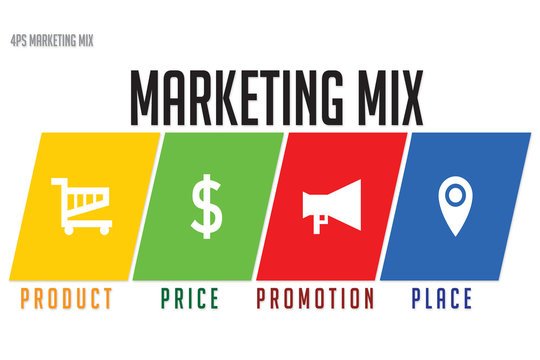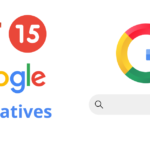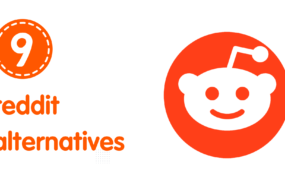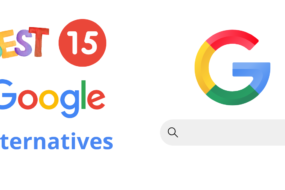
In the fast-paced and ever-evolving marketing world, professionals continually seek innovative strategies to reach and engage their target audience. One of the most intriguing developments in recent years is viral marketing.
It’s a concept that has gained immense popularity, often capturing the imagination of marketers and business owners alike.
The question, however, is to which element of the marketing mix is viral marketing most closely related? To answer this question, we must delve into the fundamentals of viral marketing, explore its relationship with various aspects of the marketing mix, and Assess the pros and cons of this method.
Viral Marketing: A Brief Overview

Viral marketing is a promotional tactic that depends on consumers to spread a marketing message voluntarily.
The term “viral” stems from the idea that the message spreads from person to person, akin to the spread of a virus. That can be through various forms, such as videos, images, memes, or articles easily shareable on social media platforms, emails, or other digital channels.
The heart of viral marketing lies in its ability to leverage the interconnectedness of our digital world. It encourages individuals to share content with friends, family, and followers, exponentially expanding a campaign’s reach.
Viral marketing campaigns can achieve incredible visibility and engagement with relatively low initial costs.
Defining The Marketing Mix

Before diving deep into the viral marketing world, it is essential to understand the marketing mix. The marketing mix, also known as the 4Ps, is a fundamental framework in marketing that consists of four key elements: Product, Price, Place, and Promotion.
Collectively, these elements define a marketing strategy and assist businesses in making well-informed decisions to fulfill their target market’s needs and achieve their marketing objectives. Each 4Ps plays a crucial role in a company’s marketing efforts.
- Product: This element pertains to a business’s actual product or service to its customers. It encompasses the product’s features, design, quality, and packaging.
- Price relates to how much a customer pays for the product or service. Pricing strategies can vary and impact a customer’s perception of the product’s value.
- Place Encompasses the distribution channels and methods To ensure the product is within reach of the target audience. It entails decisions regarding the product’s availability and how it is presented, sold, or delivered.
- Promotion: Promotion involves all the activities and efforts To market the product or service to the target audience. It includes advertising, public relations, sales promotions, and other communication strategies.
To Which Element Of The Marketing Mix Is Viral Marketing Most Closely Related?
Viral marketing is most closely related to the “Promotion” element of the marketing mix. The marketing mix, often called the 4Ps, consists of Product, Price, Place, and Promotion.
Viral marketing is a specific promotional strategy that aims to create a buzz or word-of-mouth advertising for a product, service, or brand by leveraging social media, online sharing, and other viral mechanisms.
It relies on the rapid spread of a marketing message through networks of people, often with the help of engaging and shareable content. Here’s a breakdown of how viral marketing connects to the elements of the marketing mix:
Product
Viral marketing has a unique relationship with the product element of the marketing mix. It is not about directly promoting the product’s features or attributes but somewhat indirectly creating a buzz around it. In many cases, the product itself might not be the primary focus of the viral content.
Instead, the content should align with the target audience’s values, interests, or lifestyle. For instance, a company selling athletic shoes may not create a viral video solely focused on the shoe’s features.
They might create a video showcasing extreme sports athletes performing daring feats while wearing their shoes. The focus is on the lifestyle and values associated with the product rather than the product itself.
In this way, viral marketing utilizes the product as a backdrop, creating a brand association with values and lifestyles that resonate with the target audience.
So, while not directly related to the product’s features, viral marketing influences how the product is perceived and associated with a particular lifestyle or identity.
Price
Price is typically not a focal point of viral marketing campaigns. These campaigns are more concerned with creating excitement, intrigue, or entertainment rather than discussing the cost of the product.
Viral marketing aims to create a sense of desirability for the product, and discussions about price can often detract from that goal.
Price can play a role in viral marketing. If a product is perceived as having a great value, it can become more shareable and generate more buzz.
This perception is often driven by the product’s features and the value it provides to the customer. Therefore, while not a central focus, price indirectly influences the success of viral marketing efforts.
Place
Viral marketing has a unique relationship with the place element of the marketing mix. In traditional marketing, “place” refers to the physical or online locations where customers can purchase a product.
In viral marketing, the focus is not on where the product can be bought but on where the content is shared and distributed.
The “place” in viral marketing is the digital landscape, primarily social media platforms, content-sharing websites, and other virtual environments where individuals interact and participate in content discussions. Viral campaigns rely on these online platforms to facilitate the rapid spread of content.
The chosen “place” should be strategically selected to reach the target audience effectively. For example, if a business aims to target a younger demographic, platforms like TikTok and Instagram might be the ideal places to seed and promote viral content.
The selection of the right “place” is crucial for the success of the viral marketing initiative.
Promotion
Promotion is the most direct and obvious connection between viral marketing and the marketing mix. Viral marketing is a promotional strategy that falls under the broader promotion category.
It is essential to note that viral marketing operates differently from traditional promotional methods. Instead of direct advertising or marketing messages, viral campaigns create engaging, shareable, and often entertaining content.
The goal is for individuals to voluntarily share the content, which is more powerful than traditional advertising because it leverages personal recommendations and social proof.
While traditional promotion methods involve spending money on advertising space, viral marketing has the potential to go viral without significant advertising costs.
It relies on organic, word-of-mouth promotion, making it a cost-effective promotional approach. Incorporated within the marketing mix, the promotional element encompasses where viral marketing has the closest and most direct connection.
Viral marketing is a unique and highly effective form of promotion that leverages social sharing, user engagement, and word-of-mouth to amplify the reach and impact of a message or product.
Advantages Of Viral Marketing
Viral marketing, on the other hand, comes with its own set of advantages:
- Cost-Effective: Viral marketing campaigns can be remarkably cost-effective. The initial investment typically involves creating shareable content, but the distribution cost is minimal since it relies on individuals sharing the content voluntarily. This affordability makes it an appealing choice for businesses with limited budgets.
- Exponential Reach: When a viral campaign takes off, it can reach a vast audience quickly. The viral nature of the content means that each share multiplies the campaign’s reach, leading to exponential growth in visibility.
- Engagement And Interaction: Viral content often encourages high levels of engagement, as it resonates with viewers personally or emotionally. It can lead to comments, likes, shares, and discussions, allowing brands to connect with their audience more deeply.
- Credibility Through Social Proof: When content goes viral, it can create a sense of social proof. People are more likely to trust and engage with content that many others have already engaged with. This social proof can boost a brand’s credibility and authority.
- Potential For Rapid Results: Unlike PR, which often requires time to build relationships and secure media coverage, viral marketing has the potential for rapid results. A well-executed viral campaign can generate immediate attention and impact.
Disadvantages Of Viral Marketing
- Unpredictable Nature: The viral nature of marketing makes it inherently unpredictable. While marketers can create content designed to go viral, there are no guarantees. Viral success often depends on timing, audience sentiment, and sheer luck.
- Short-Lived Impact: Viral content can have a short-lived impact. The intense interest in a viral campaign can quickly wane, and maintaining the momentum can be challenging. Marketers often need to follow up with other strategies to sustain long-term success.
- Risk of Negative Backlash: Just as viral content can attract positive attention, it can also attract negative feedback and backlash. Public opinion can turn against a brand if a viral campaign is perceived as insensitive or inappropriate.
- Difficulty In Replication: Successfully creating viral content isn’t something that can be easily replicated. Marketers may need help to capture lightning in a bottle again, and many attempts at viral marketing may need to be revised.
- Limited Control Over Messaging: Viral content can take on a life of its own. Once it’s out in the digital world, it can be altered, parodied, or shared with unintended messages. This lack of control can be a significant challenge for brands.
Marketing Tools Advantages And Disadvantages
Advantages:
- Cost-Effective: Utilizing viral marketing can provide a cost-efficient means to reach a large audience, as it relies on people sharing content voluntarily.
- Rapid Exposure: Viral campaigns can spread quickly, reaching a vast audience quickly.
- Enhanced Credibility: Recommendations and shares from friends and family can lend credibility to the message or product.
- Brand Awareness: Successful viral marketing can significantly boost brand awareness and visibility.
Disadvantages:
- Lack Of Control: Viral marketing can be unpredictable, and a campaign is not guaranteed to go viral.
- Negative Feedback: If a campaign backfires or receives negative feedback, it can spread as quickly as positive content.
- Short-Lived: Viral content often has a short lifespan, and the attention it generates may be short-lived.
- Difficulty Measuring ROI: Evaluating the return on investment (ROI) for viral marketing campaigns can be challenging, as success is only sometimes directly tied to sales or conversions.
Integrated Marketing Communication (IMC) And Viral Marketing
Integrated Marketing Communication (IMC) is a marketing approach highlighting the significance of uniform and well-coordinated messaging across diverse communication channels.
IMC seeks to ensure that all marketing efforts Collaborate to establish a cohesive brand identity and message.
Viral marketing can seamlessly integrate into an IMC strategy as it aligns to spread a consistent message across diverse channels.
Here’s how IMC and viral marketing are related:
- Message Consistency: IMC stresses the importance of consistent messaging. When viral marketing campaigns align with the brand’s overall message, they reinforce it across different platforms. This consistency is essential for brand building and recognition.
- Synergy Across Channels: IMC encourages synergy across various marketing channels, from advertising and public relations to digital marketing and social media. When integrated effectively, viral marketing can amplify the message’s impact and create a harmonious brand presence across all channels.
- Target Audience Integration: IMC also emphasizes understanding and targeting specific audiences. Viral marketing can be tailored to resonate. Aligning with the preferences and interests of the target audience, this personalized approach can enhance the efficacy of viral campaigns.
- Multi-Channel Distribution: IMC advocates using multiple communication channels to reach the audience. Viral marketing inherently operates through various digital channels, making it an ideal fit for IMC strategies that aim to maximize reach and engagement.
- Measurement And Analysis: IMC involves tracking and analyzing the performance of marketing efforts. Viral marketing campaigns can be measured and evaluated to determine their impact on brand awareness, engagement, and other key performance indicators. This data can be used to refine IMC strategies for future campaigns.
Disadvantages Of Public Relations
- Lack Of Control: One of the significant disadvantages of PR is the lack of control over the narrative. Unlike paid advertising, where the marketer controls the message, PR relies on journalists, influencers, and the media to convey the story. This lack of control can sometimes lead to misinterpretation or a different emphasis than intended.
- Uncertain Results: PR outcomes can take time to measure and quantify. While it’s evident when a brand receives media coverage, determining the exact impact on sales or brand reputation can be elusive. This ambiguity in results can make it difficult to justify the ROI of PR efforts.
- Time-Consuming: Building relationships with journalists, influencers, and media outlets is time-consuming. It requires ongoing effort and often yields results over the long term. In the fast-paced marketing world, this delay can be a significant drawback.
- Negative Coverage: Public relations can’t guarantee positive coverage. Sometimes, a brand may find itself in a crisis, receiving negative attention in the media. PR professionals must be prepared to handle such situations and mitigate the damage.
FAQ’S
Q1. Which Of The Following Is True Of Viral Marketing?
Ans: Viral marketing is a dynamic strategy that relies on the rapid spread of content through word of mouth and social sharing. One key aspect of viral marketing is leveraging existing social networks and online communities to amplify its reach.
The true power of viral marketing lies in its ability to engage audiences and encourage them to share content voluntarily, creating a snowball effect. Successful viral marketing campaigns often tap into emotions and trends, making them highly shareable.
However, it’s important to note that not all attempts at viral marketing are successful, and they Demand a profound comprehension of the target audience and online platforms to be adequate.
Q2. Which Element Of The Marketing Mix Is Related To Personal Selling?
Ans: Personal selling is related to the “Promotion” component of the marketing mix, comprising a company’s various strategies and tactics to convey and advertise. To present To introduce its offerings to the target audience.
Personal selling involves direct interaction between a salesperson and potential customers. Here are two subpoints explaining this relationship:
Interpersonal Communication
Personal selling is a direct, one-on-one Interaction between a sales representative and a potential customer. This communication can occur face-to-face, over the phone, or through video conferencing.
The salesperson engages in a conversation with the potential customer to understand their needs, answer their questions, and provide personalized information about the product or service.
This personal interaction allows for a tailored sales approach, making it a vital component of the promotional mix, as it enables companies to adapt their message to the individual customer’s preferences and needs.
Building Relationships
Personal selling is particularly effective for products or services with a high degree of complexity or a high price point. The salesperson is crucial in building and nurturing long-term customer relationships in such cases.
Salespeople can establish trust, address objections, and provide ongoing support through personal selling. These connections can result in recurrent business, recommendations, and loyalty.
Personal selling is a promotional strategy that goes beyond mere advertising and helps develop and maintain strong customer relationships, contributing to the overall success of the marketing mix.
Conclusion
In conclusion, viral marketing is most closely linked to the promotional aspect of the marketing mix. It harnesses the power of social sharing and word-of-mouth to promote a product or service.
However, its success can also be influenced by the quality of the product, pricing strategies, and effective placement and distribution.
For businesses aiming to create viral marketing campaigns, it’s essential to recognize the interplay between these elements and craft a holistic marketing strategy leveraging virality’s potential.








No Comments